Tag: career in construction
4 Interview Questions to Expect After Construction School (& How To Answer Them)
September 16, 2021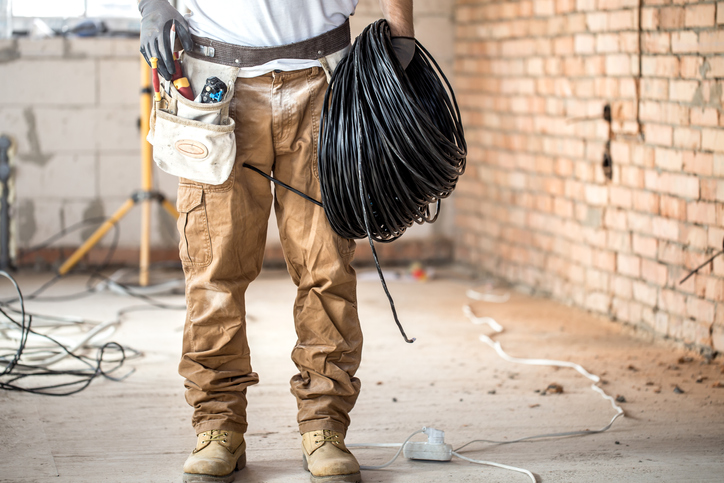
Ready to launch your career as a construction electrician? Preparing for your job interview is one of the best ways to increase your chances of success. When you arrive at the interview stage, your potential employer has already seen your resume. This means they already know you have the skills and experience necessary to take on the job at hand. So what’s the point of an interview? It’s your golden opportunity to show an organization that you’re not only a good fit for the role you’re applying for on paper. You’ll get to tell them why you’re perfect for the job based on your character, commitment, work ethic–and any other professional talents you think they need to hear about!
Below, discover four common interview questions that you should prepare to be asked when applying for a job as a construction electrician.
1. What Made You Choose a Career in Construction?
Employers want to know what motivated you to enter a career in construction, as this will tell them more about who you are as a person and how committed you are to the industry. When answering this question, it’s important to be honest–while emphasizing why you’re passionate about working as a construction electrician. Did you always know you were going to become an electrician? Tell your potential employer why. Do you enjoy being challenged and solving complex problems? Don’t forget to let your interviewer know what excites you about this career path. By answering honestly, your passion for the role will shine through–which will impress prospective employers.

2. What Do You Know About Our Company?
In almost any field, it’s likely that an interviewer will ask a candidate what they know about their company. This question is meant to test your knowledge of the organization you’re applying to work for. Interviewers want to know that you’ve researched their company. This demonstrates your interest in the position and let’s them know that for you, this isn’t just another job. Prepare for this question by conducting plenty of research on the company before arriving at the interview. You’ll want to familiarize yourself with the organization’s mission, values, their history, the services they offer, and any other relevant information.
3. Where Do You See Yourself in the Next Five Years?
If you’re interviewing for a position in the construction trades after completing your training, you’ll want to come to an interview prepared to explain your future career plans. A hiring organization wants to know that the person they’re planning to hire has an idea of how they want to advance throughout their career. When answering this question, talk about how the position you’re applying for will equip you with the skills you’ll need to succeed in attaining your career goals. Showing your potential employer that this job is a step in the right direction for you assures them that you’ll be committed to their organization for a longer period of time.
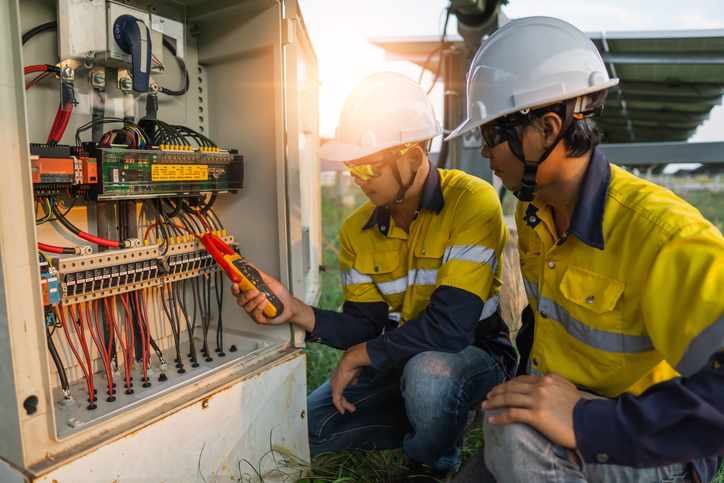
4. Do You Have Any Questions for Us?
Don’t mistake this seemingly “easy” question for one that isn’t important. When an organization asks an interviewee whether they have any questions, they’re gauging your interest in the role. Coming prepared for an interview with a list of questions based on the research you’ve conducted is a great way to show an organization that you’ve given this opportunity plenty of thought. Asking questions also shows that you’re taking the process seriously.
Before your next interview, study these questions and come up with some thoughtful answers. When you arrive prepared, you’ll be sure to succeed!
Are you considering attending construction school?
Launch your career with a program at the North American Trade Schools today!
If You’re in Construction College, Here’s What You Need to Know About Electrical Motor Theory
July 20, 2021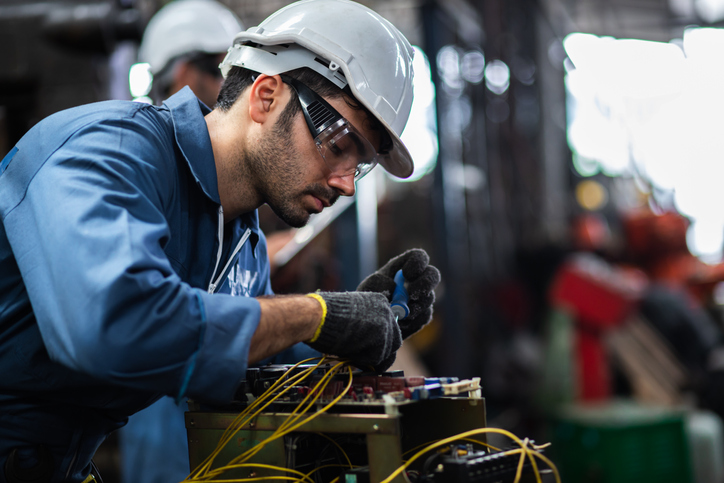
Working in the electrical industry requires knowledge of one of the fundamental components of modern construction: electric motors. From power tools to household appliances to industrial applications, electric motors are found everywhere. Essentially, an electric motor is a machine used to convert electrical energy into mechanical energy. Electricity is passed through a coil to produce the power to drive a machine.
Given their availability in today’s world, knowledge of the theory and application of electrical motors is essential for anyone hoping to pursue a career in the field of electrical construction. Skilled professionals should have a complete understanding of electrical motor theory and its application in residential, commercial, and industrial systems. If you’re considering a career as a construction and maintenance electrician, here’s a quick look at the fundamentals of electrical motor theory!
How Do Electric Motors Work?
The electric motor works according to an interaction between the electric current and the magnetic field, which generates a force to make the shaft rotate. In other words, when an electric current passes through a coil, a magnetic field is generated that causes the coil to rotate on its own axis. Most electric motors today work according to this principle of electromagnetic induction. The mechanics of a generator work in much the same way as an electric motor – however, a generator works in the opposite direction, converting mechanical energy into electrical energy.
Students in construction college learn the principles and applications of electricity to prepare them for competitive careers as electrical control assemblers, electrical technicians, and more.
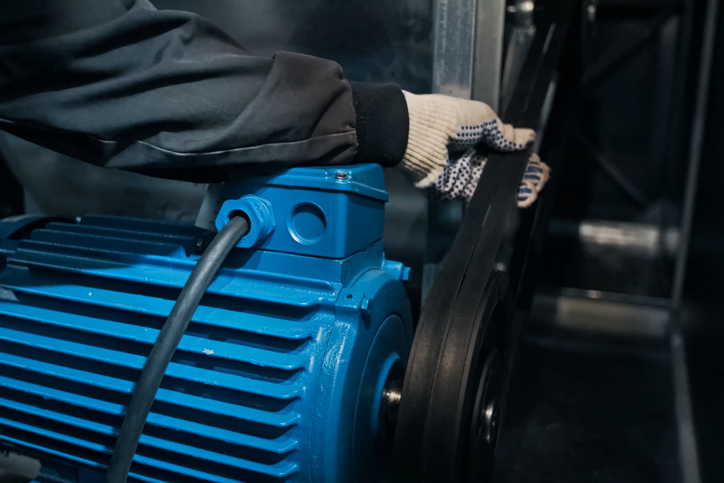
Types of Electrical Motors
Electric motors can be classified according to their power source, construction, motion output, and application. Typical motors are equipped to provide sufficient mechanical power for industrial uses in pumps, fans, power tools, and disk drives. Today, the most commonly used electrical motors are AC motors and DC motors.
DC (Direct Current) motors are widely used because they come with a pre-existing power distribution system. Their speed can be adjusted through the intensity of the electric current. The ability to control the speed makes them a popular choice for home appliances, vehicles, and elevators.
AC (Alternating Current) motors are able to reverse the direction of the electric current at regular intervals. This type of motor uses magnetic forces to propel the current through the device. The current creates a rotating magnetic field that can move the rotor. With a low starting power and controlled acceleration, AC motors are suitable for instrumentation and industrial applications.
Trained electricians pursuing a career in construction will be able to distinguish the appropriate uses of different types of electrical motors.
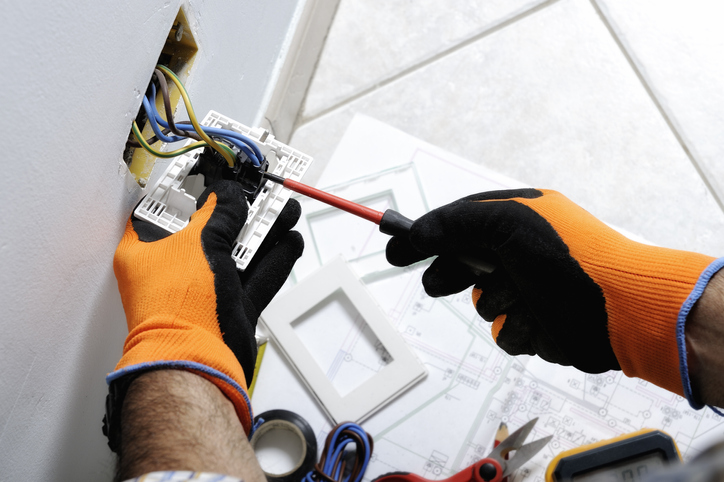
Advantages of Electrical Motors in Construction Careers
In application, electric motors have several advantages over normal engines. When it comes to their comparative power, the horsepower rating is similar – however, the cost of electric motors is significantly lower than fossil fuel engines. These motors also don’t use fuel, nor do they require the maintenance of engine oil. In that sense, electric motors require little maintenance with a lifespan of up to 30,000 hours if maintained properly. Not to mention, electric motors can be widely used across different appliances, including machine tools, ships, paper mills, motor vehicles, as well as heating and ventilation systems. With knowledge of the fundamental workings of electric motors, students in construction are prepared for a modern and practical career path.
Are you interested in construction careers?
Contact NATS today to learn more about our program!
5 Tips for Improving On-Site Safety for Professionals in Construction Careers
May 04, 2021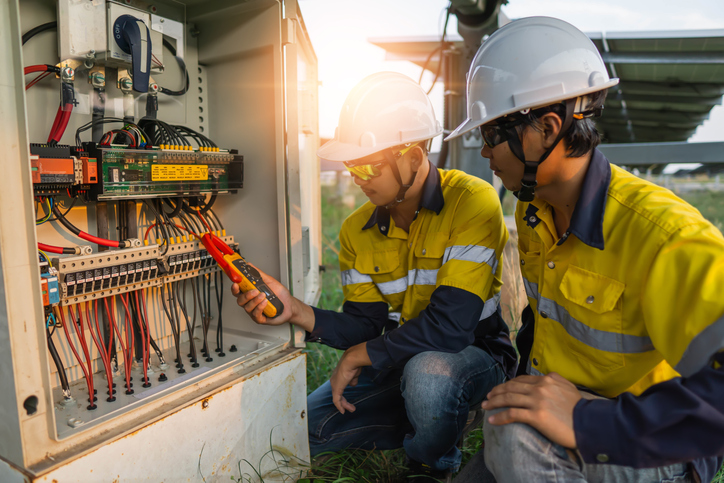
At any construction site, it’s important to take the proper precautions to avoid accidents at all times–especially when dealing with electricity. Electrical safety is one of the primary safety concerns within a construction site due to the risks electricity poses. If you’re considering a career as a construction and maintenance electrician, read on to discover five different ways to improve on-site safety during your career.
1. Those in Construction Careers Should Wear Personal Protective Equipment
Wearing personal protective equipment is the most important step that individuals can take to ensure their safety when working on a construction site. Within an area of electrical work, those in construction careers should wear footwear and gloves. When working in the vicinity of electrical wiring, a worker’s personal protective equipment should also include fire-resistant helmets and face shields in order to provide defense against potential shocks. While the level of protection depends on the amount of electricity a worker is exposed to, suiting up in proper personal protective equipment is always necessary when working on any construction site.

2. Choose the Right Testing Equipment
When working with electricity, using high-quality testing equipment is essential in order to assess the risk involved in any operation. Testing equipment, such as: receptacle testers, voltage detectors, and clamp metres, should be used in order to check wiring. This is to determine whether it’s grounded, dead, or requires safety gear. Using testing equipment is essential in preventing potential electrical accidents.
3. Use Circuit Breakers and Voltage Regulators to Avoid Electrical Issues
Accidents can happen despite taking preventative measures. If you’re seeking a career in construction, it’s important to be able to manage a potential crisis in order to prevent further damage. The best way to respond to emergencies is to use voltage regulators and circuit breakers. These devices will regulate power and protect against equipment damage in the event of a short circuit, a power surge, or another problem.

4. Determine Electrical Hazards Through Proper Signage
On a construction site, a lack of awareness of potential electrical hazards may lead to electrical accidents. Project management software can be used to identify and track electrical hazards as they arise throughout the construction process. After the identification process, proper signage should be used to inform workers where electrical hazards are located within a construction site. Signage should include easy-to-read illustrations and language in order to ensure that all workers can understand the present risks. Utilizing proper signage throughout a construction site will improve safety and reduce the danger that on-site workers are exposed to.
5. Never Work in Wet Conditions
Anyone familiar with electricity knows that when water comes into contact with electrical equipment and infrastructure, the risk of electrocution increases. With this in mind, all electrical equipment should be protected against possible exposure to water in a construction site. If water does infiltrate the site’s electrical infrastructure, shutting off the power supply immediately is the best way to prevent an accident.
Following safety protocols can prevent accidents and save lives. In order to ensure the safety of all workers within a construction site, it’s important to incorporate these tips into an electrical safety plan and strictly implement them in practice.
Ready to attend construction college?
Launch your career with a program at the North American Trade Schools today!
Trends to Watch in 2021 for Those With Construction Careers
December 29, 2020
Within the construction industry, businesses are often looking to adopt trends that will cut costs and improve the way that business, and construction itself, is done. Advancements in technology could have a huge impact on the future of the construction industry. In 2020, the COVID-19 pandemic proved that adapting and innovating–while utilizing available technologies–was essential to continuing operations throughout the many disruptions that construction companies and employees saw.
These four rising trends highlight how the construction industry is changing and innovating–as it gives us a sneak peek into what to expect in 2021.
Those in Construction Careers Will Want to Watch for 3D Printing
3D printing is a technology that’s already being used in the construction industry to make custom projects more affordable, as well as to help complete projects at a faster rate. 3D printing is typically used to aid larger projects by building certain smaller components to fit into them. The capacities of 3D printing are still being explored, but those with a career in construction should look for this technology in 2021.
The Use of Big Data
There’s a lot of potential for the construction industry when it comes to big data. Big data is a great tool for construction companies to use to determine and analyze risk. The use of big data allows construction companies to apply algorithms to construction data, sizing a project up against market and material trends, as well as the weather. Construction companies can better manage risk with big data, as they’ll be better informed about the correct amount of resources to use. This will be better equipped for potential losses. The use of big data for risk management increased in 2020, and so there’s a good chance that it’ll continue in 2021.
Prefabricated Buildings and Modular Construction
In an era where separate space is increasingly necessary, prefabricated buildings and modular construction have come to flourish. More and more businesses are requiring temporary solutions to the social-distancing requirements and strains which have been imposed by the COVID-19 pandemic. Hospitals need extra rooms, businesses need extra offices, and homeowners might just need another space where they can work from home or decompress. Modular construction and prefabricated buildings are a great option for temporary, efficient, and affordable expansion. This is certainly a trend that could stick with the construction industry, keeping those in construction careers busy.
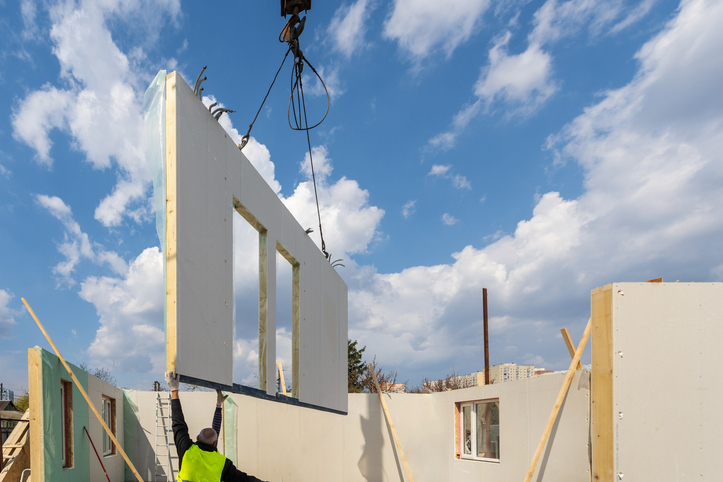
The Use of Design Technology
Building Information Modeling (BIM), or what contractors sometimes call Virtual Design and Construction (VDC), is on the rise as a means of virtually designing and constructing a building before it is physically built. It allows professionals to see how a building would hold up when constructed, making note of potential pitfalls, budgetary excesses, and more. The increasing use of this technology is helping professionals keep construction costs down and save time. By using BIM, designers are also able to think bigger and bolder in terms of the structures they create. For these reasons, it’s safe to say that the use of these helpful design technologies could continue to expand in 2021.
Are you ready to see these trends in action?
Enroll in construction college at the North American Trade School today.
The Most Sustainable Construction Materials for Those in Construction School
September 08, 2020
Plenty of work has been done over the last few years to make the construction of necessary buildings more sustainable. That includes taking a look at the construction materials themselves. There are different definitions of sustainability in terms of construction materials. It could refer to products that are locally sourced, how resilient a product is, or how much energy it takes to produce it.
Some professionals are looking at material sustainability as a concept that considers all the energy required to extract a material, produce it, and transport it. They also look at its appropriateness for the environment, the rate at which it degrades, and how often it needs to be replaced. Some construction professionals are also moving towards sustainability by incorporating recycled materials. Read on for a few examples of sustainable materials!
Bamboo Could Dominate the Construction Trades
Bamboo is a construction material with a lot of potential. It can be used in walls, flooring, or furniture, and its benefit is that it is extremely durable and strong. It has a greater compressive strength than even bricks or concrete. Its high strength-to-weight ratio means that it is relatively lightweight and takes less energy to transport than many other materials.

Bamboo is a perennial grass and can be found on several continents. Currently, it is mostly grown in South America and Asia. As a grass, its extremely quick rate of self-generation helps its sustainability. It continues to spread and grow without the need to replant it after harvesting it. Professionals with a career in construction should be aware of one potential downside to using bamboo: it requires treatment to make it resistant to insects and rotting.
Sheep’s Wool Is A Natural Construction Material
Sheep’s wool is a material that has been used for all kinds of things for hundreds of years. These days, it can still be beneficial for the construction industry. Sheep’s wool is naturally insulating. And, while it’ll still need extra treatment to make it properly safe with regards to fire risks, it is a material with a naturally high ignition temperature. As a result, it can be an energy-efficient insulator used in walls, ceilings, and attics.
One of the sustainable benefits of sheep’s wool is that it has similar properties to mineral wool or glass wool but requires less energy to produce. It is, of course, naturally regenerating. One of the potential downsides to using this material is that it requires treatment to prevent the infiltration of insects and fungi.
Cork Doesn’t Have a Significant Environmental Impact
Cork comes from the tree bark of the cork oak. After construction school, professionals can use this material as flooring or sub-flooring. It’s very flexible and resilient, a good thermal insulator, and efficient at absorbing noises and shocks, making it an effective construction material.

The benefit of this material is that it’s sourced entirely from natural sources. The cork oak will continue to grow and reproduce the material after it is extracted from it, making it a sustainable resource to use within the construction industry.
Do you want to make your entry into the construction trades?
Contact North American Trade Schools for more information!
3 Steps to Starting Your Own Business after Construction School
April 07, 2020
If you are business-minded with an entrepreneurial spirit, you might be considering starting your own business after graduating from a construction program. Business owners can enjoy a flexible schedule, ample learning opportunities, and competitive remuneration.
However, starting a business is far from simple. Even the best construction worker in the world will need to conduct market research, have a basic understanding of finance and accounting, and learn about law and marketing.
Read on to find out more about what it takes to start your own business after construction training.
Step 1: Do Your Research
Before even thinking about launching your own business, you will need to conduct in-depth market research to establish demand and rates. Is there demand for another construction business in your area? How much are people paying on average for typical projects?
If you have any friends or acquaintances working in the industry, make sure to ask them for any insights. You could also do some research online and use social media to identify your main competitors, or even conduct surveys and organize small focus groups.
Use this research to form your business plan and identify your unique selling point (USP). What can you offer customers that no one else can? Is it a better price point? Or expertise in one particular area? Whatever it is, use it to your advantage in a career in construction.

Step 2: Prepare an In-Depth Business Plan for Your Career in Construction
Once you’ve done your research, you’re ready to write your business plan. Make it as detailed as possible,marking out your goals for each month and including estimated annual turnover and gross profits. This will be particularly useful if you need to apply for funding from a financial institution.
This should also give you an idea of how much money you’ll need to get started. After studying at construction school, you should have a good idea of all the tools and equipment you’ll need to work as an independent construction worker.
Calculate how much you’ll need to invest in these, as well as in vehicles, marketing, and software. It can take a while for any new business to start making money, so make sure you have a cushion for the first few months.
You’ll also need to decide who you want to work for. Do you want to work for residential property owners or businesses? Are you looking for small jobs or bigger, long-term projects? As well as this, how many staff will you need to hire? Or will you choose to work with contractors? Thinking about these things early on will help you form a clearer picture in your mind of what your business will look like, and what you need to do to get it off the ground.
Step 3: Check the Paperwork
As with any new business, you will need to make sure that you’ve completed all of the necessary paperwork correctly. You will need to register your business for an EIN, and have all the right licenses and permits. You will also need to get insurance to protect yourself and your business.
If you’re concerned about legalities or taxes, it might be a good idea to hire a lawyer or an accountant. You could be the best construction worker in the world, but if you can’t take care of the administration of your business, it won’t go far!

Do you want to learn more about construction trades?
Contact North American Trade Schools for more information!





